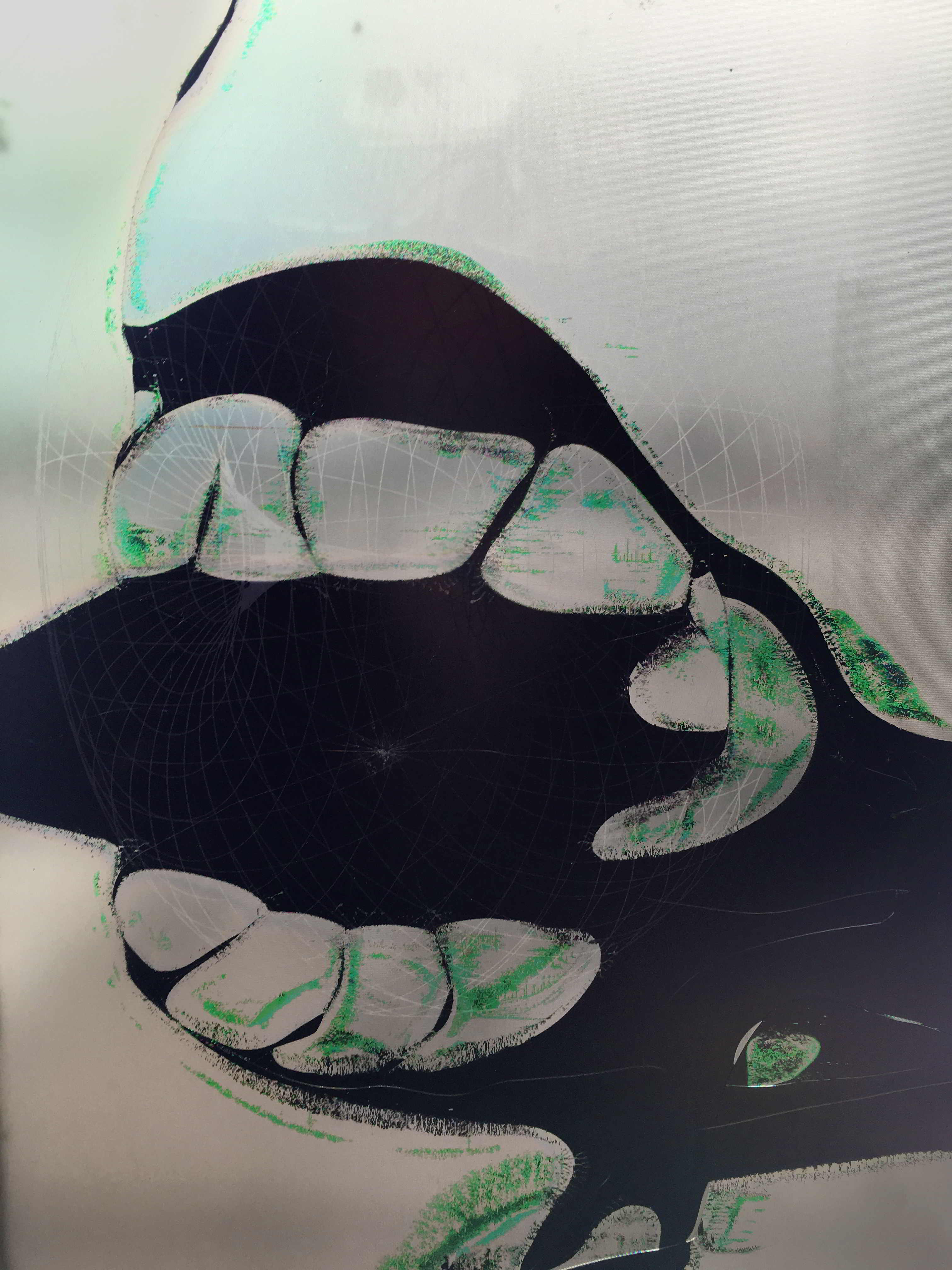
Detail of collage © Beate Geissler & Oliver Sann, Hopium Economy
The Chemist and the Breacher
More than a metaphor describing the technosphere, addiction in fact characterizes it. In this text, artists Beate Geissler and Oliver Sann collage a series of interviews and research vignettes on methamphetamine in the US. This collection of different scenes, excerpted from the project Hopium Economy (2019), approaches a form of molecular technology intertwining DIY chemistry and the mass use of agricultural steroids.
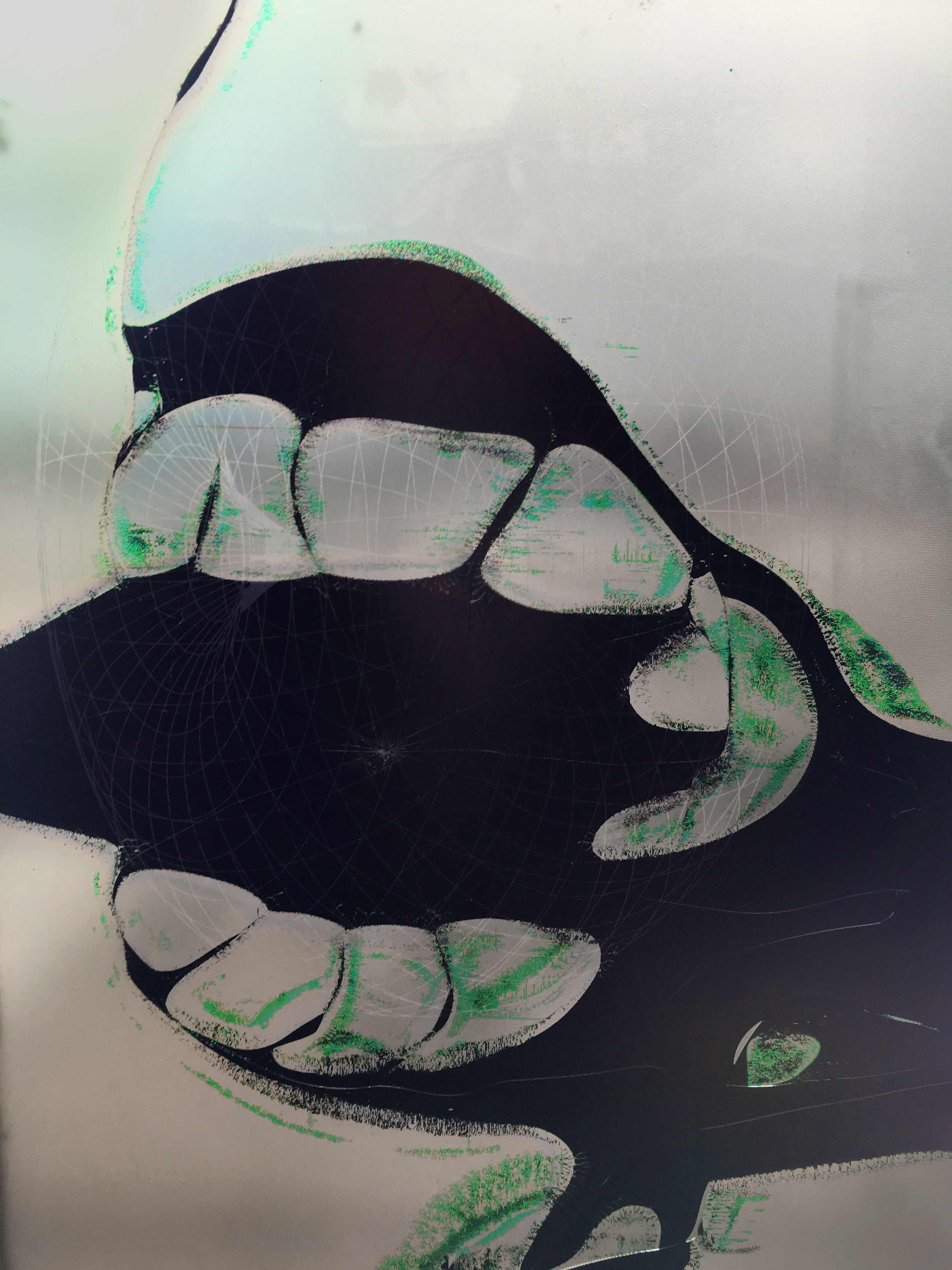
large
align-left
align-right
delete
Scene I: Methamphetamine
Beyond a wide field of corn lies a sea of soy, before the lushness begins to shrink. Large swaths of vegetation appear, never ending, infinite green, revealing miles of bizarre, agricultural, linear marks that form grids—a imprint composed by earth-shattering extractions in search of soil and oil. Streams of water, man-made canals, control the water that feeds the landscape in a range of invisible, indistinguishable, toxic transparencies. The ceaseless sea of soil cultivation is interrupted by clusters of erect, shiny, polished tower —the silos—and by uncountable agricultural suppositories holding the promise of growth and prosperity, the steroids for the land.
Breacher: Pseudoephedrine is the raw material, the drug they’re after. That’s Sudafed. It’s an over-the-counter or prescription sinus cold medicine, but they have to have a whole lot, because in a Sudafed pill there’s only a minute amount of pseudoephedrine. The rest of it is pill dough, inert material, that carries the amphetamine into your body so you can absorb it. What they do is they take a large amount of those pills … It probably takes at least 150 or 200 of those pills to make a pill soak—this is what it’s called. They crush those pills up because they don’t want that pill dough. They don’t want that inert material. They crush that up, put that in a solution usually of camping fuel-like … you’d use in a camper … you know, a camping thing? … to get that to fall out to get the chemical reaction to make the amphetamine dough move over to the side they want it on, where they can get the product they want.
(pauses)
They use lithium batteries, so they’ll take lithium batteries, tear all the lithium out of them. Well, you know lithium is super flammable as well if it gets with water, so they have to have pretty clean, dry … They’re going to put this lithium in that camping fuel with their pill soak, after they get finished, which they’ve soaked off. Then, after lithium, they use ether, spray cans of ether. You can’t go to Rural King now and buy a case of ether to start your tractor without signing for it and showing ID.
Then, at the very end, when it’s all mixed up, it’s not actually cooked over a fire per se. It’s stirred and dealt with, and it’s an exothermic reaction, so it gets hot on its own. Once they get there, then they have a pink liquid and they do what they call smoking it off. They have to make a HCL [hydrochloric acid gas] generator.
How they make an HCL generator is they use salt—table salt—and liquid fire, or drain cleaner, what you would pour down your drain to clean your drain out because it’s a real caustic solution. When you mix caustic and salt together, you get hydrochloric acid, which makes hydrochloric gas, which they put in a soda bottle, with a tube running out of it. They run that tube over into their liquid. Then, as the gas comes off the hydrochloric acid and goes into the liquid, it bubbles in there and it looks like a snow globe. If you shake up a globe at Christmas time, it’s that white stuff that falls down, you know?
That’s where we wanted to catch them. We wanted to catch them right there, and that’s a short period of time, you know? Half an hour to smoke off a batch, but when they got that tube stuck in there and this methamphetamine, crystal methamphetamine—that’s what they’re after—is falling out, they got dope now. I can arrest them for possession of methamphetamine and manufacturing methamphetamine because they got to finish the product. Other than that, after that’s all finished, it’s smoked off.
It depends on how big their cook is. We had one guy here … he was using a washing machine for his pill soak, so he would fill the washing machine tube up with pills. He was making big batches, $100,000 batches.
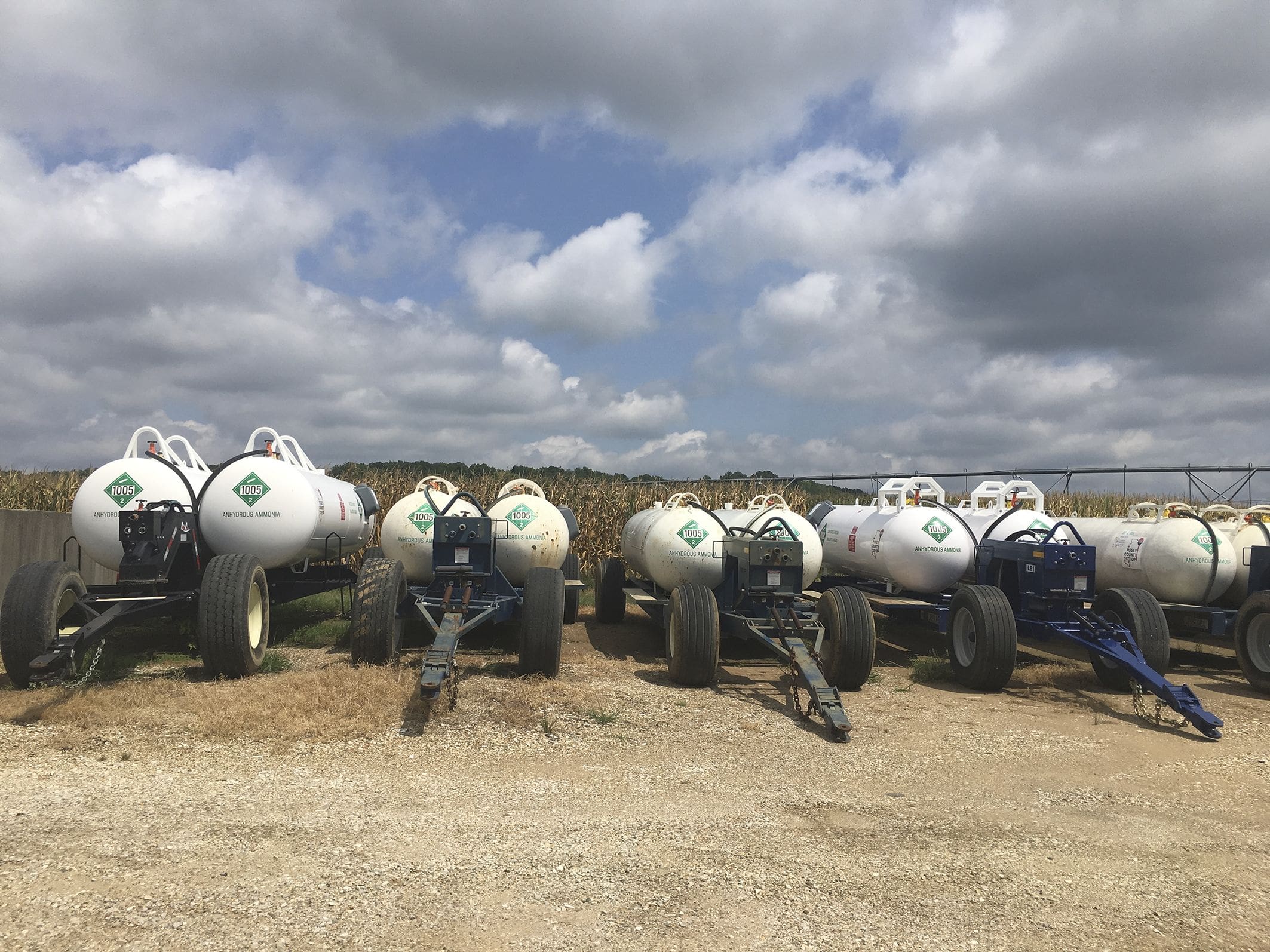
large
align-left
align-right
delete
Chemist: One of the things that natural scientists are aware of is that we are interacting with systems that are natural. There’s this sense of, how do you relate to that? That difference? The traditional view of science—the very male-dominated, very Western view of science—is that nature is something to be conquered and controlled. This is where you get into certain perspectives that look at things in ways that are hardly very respectful of nature, but still have this sense of, again, gaining control. I think that’s still the dominant default narrative. Sometimes it’s discovery. We find out how nature works. Some of it’s synthesis. We actually make new objects, so it’s not just natural objects. There are synthetic objects. There are synthetic chemists. They make things that never existed before in the universe.
Breacher: After they’ve got this white material, then they pour that in coffee filters and let them sit out to drip-dry and drain, and whenever that gets dry … It all depends on how good a cook is, how good they are. If they’re real good cooks, they get great big crystals. I mean, tight crystal methamphetamine. Like the Medellín Cartel and those guys down in South America and Mexico, they make really good dope. They’re really smart about it, and they got the time to do it. Some of our local cooks here get in a big hurry, and they get more powder and then they get crystals. Same dope, same drug. It’s just on the street that crystals look…
There’s two methods that generally are used locally here. There’s a Nazi method, and then there’s the red phosphorus method. Red phosphorus is a flammable material that is used at the end of a match striker, where you strike your match. The scratcher part. That’s red phosphorus. That’s what makes it fire off. Now, that replaces anhydrous ammonia, so the rest of the cook is pretty much the same except you just replace the anhydrous ammonia with the red phosphorus.
What they do differently in the red phosphorus method is they don’t use anhydrous, and they take the red phosphorus and soak it in hydrogen peroxide. Hydrogen peroxide makes the red phosphorus go over to the liquid side, so they just pour off a red liquid and they use that instead of the anhydrous ammonia. But, in the Nazi method—which is used in 99 percent of all meth labs here locally, even probably nationwide, with the exception of a big city where it’s not readily available—they use anhydrous ammonia.
Hitler developed that. He used it with his troops. He would give it to his troops. They were invincible. Go, go, go, go. He developed that and it’s just been brought down. Now, you know, whether he was the original developer or not, I don’t know, but he did make a lot of methamphetamine. A lot.
“The young soldier, though, needed more of the drug, much more. He was exhausted by the war, becoming ‘cold and apathetic, completely without interests,’ as he himself observed. In letters sent home by the army postal service, he asked his family to send more. On May 20, 1940, for example, he wrote: ‘Perhaps you could obtain some more Pervitin for my supplies?’ He found just one pill was as effective for staying alert as liters of strong coffee. And—even better—when he took the drug, all his worries seemed to disappear. For a couple of hours, he felt happy. This 22-year-old, who wrote numerous letters home begging for more Pervitin, was not just any soldier —he was Heinrich Böll, who would go on to become one of Germany’s leading postwar writers and win a Nobel Prize for literature in 1972. And the drug he asked for is now illegal, notoriously so. We now know it as crystal meth.”Fabienne Hurst, “WWII Drug: The German Granddaddy of Crystal Meth,” Spiegel Online, May 30, 2013, http://www.spiegel.de/international/germany/crystal-meth-origins-link-back-to-nazi-germany-and-world-war-ii-a-901755.html.
Chemist: The test tube is a stage. Yeah, I think it’s easy enough to say that. Chemists will refer to molecules as their agential characters. The idea that each has a property. I mean the very word, it has a property. The property is invariant. Is a suggestion. We’re very interested in what molecules do, and finding that out and then using that knowledge. But the idea that these are choices, no, we don’t make a choice about when something melts. It just does.
Chemists are pretty spontaneously talking about, if not the actual word “agency,” then the activity of the substances that they’re working with. They know that they’re not making these things up. That there’s something that is doing something … Then it begins to move over into anthropomorphizing. It is a convenient bit of rhetorical play, e.g., if we talk about molecules as having desires. We have to talk about what the word “desire” means. Do they have conscious volition of knowing that there’s a particular outcome that they can choose within? The answer is almost certainly no. Do they have certain things that they will invariably do with great reliability, as if it is something that we can say it looks like they’re expecting? It sure looks that way.
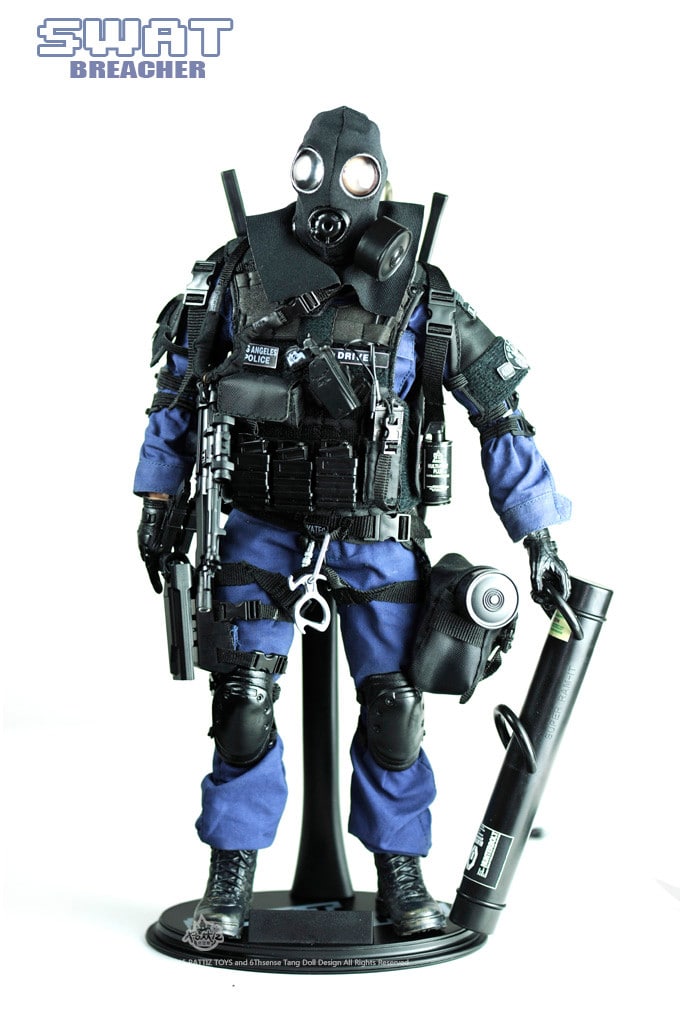
large
align-left
align-right
delete
Scene II: Special Weapons and Tactics Memories
“You get the feeling instantly. Euphoric, energized. People will stay up all night or even for several days. Increased brain activity combined with no sleep leads to hallucinations, paranoia, and erratic (sometimes violent) behavior. It feels like you wanna fuck hookers and do blow … It feels neurotic and obsessive.”“What Does Meth Feel Like?,” R/Drugs, Reddit, posted January 3, 2018, https://www.reddit.com/r/Drugs/comments/7nxkk7/what_does_meth_feel_like.
Breacher: We’re standing at 3:00 in the morning at your door with ten other guys, and the way we move, we move in a stack. The first guy to the door is the pinner. That’s what his title is. He pins the door back if you have a screen door or a storm door. First guy’s the pinner. Second guy’s the breacher. He’s the guy with a ram. Pin the door back and breach, or the second guy is a break-and-rake guy. If we can’t get in the door, you break the window, rake it, and then we all go through the window. Actually, the third guy in the stack, if you ever see a stack of SWAT guys, the third guy in the stack is the first guy in the door. The first guy in line is the last guy in the door. He’s the cuff man. He’s the handcuff man.
Actually, the door pinner is the last cuff man to come in the door. The third guy is the first guy in the door, and my place in the stack was fourth, so I was the second guy in the door. That’s where things can go really bad. It’s a big adrenaline rush to stand at somebody’s front door knowing or not knowing—either way, it didn’t matter, because we always assumed that we were going to encounter a bad guy, and the bad guy was going to be armed and he was going to try and harm us in some way to prevent himself from going to jail. Once we go through your door, somebody’s going to jail if we catch you. We got enough probable cause pre-make up that we’re going to arrest you when we get there.
(pauses)
Yeah, it’s a game. It is. They know what they’re doing. They know they’re breaking the law. They know we’re trying to catch them, and when we do it’s like … And, they call us by name. They know us. Most of them, we’ve dealt with them before. We’ve been in this same place before, but they still want to fight. They all want to fight. Every one of them wants to fight.
Now, picture this: me, ten other guys. I don’t know what you sleep in, and don’t want to know, but 3:00 in the morning, we come unannounced in full black attire, black masks, elbow pads, kneepads, machine guns, handguns, Tasers, batons, gloves, and lots of handcuffs into your bedroom and say, "Hello, good morning. The police are here."
Are you going to try and get up and whoop all eleven of us? We’ve been up for a bit. We’ve had our coffee. We’re right ready to go. Every single time, they would jump up out of bed and want to fight all of us and beat us all up and throw us out of their house. They pay the rent there, and there is no reason we should be there. It never worked out for them, but they’d always try it. Every single one of them always did.
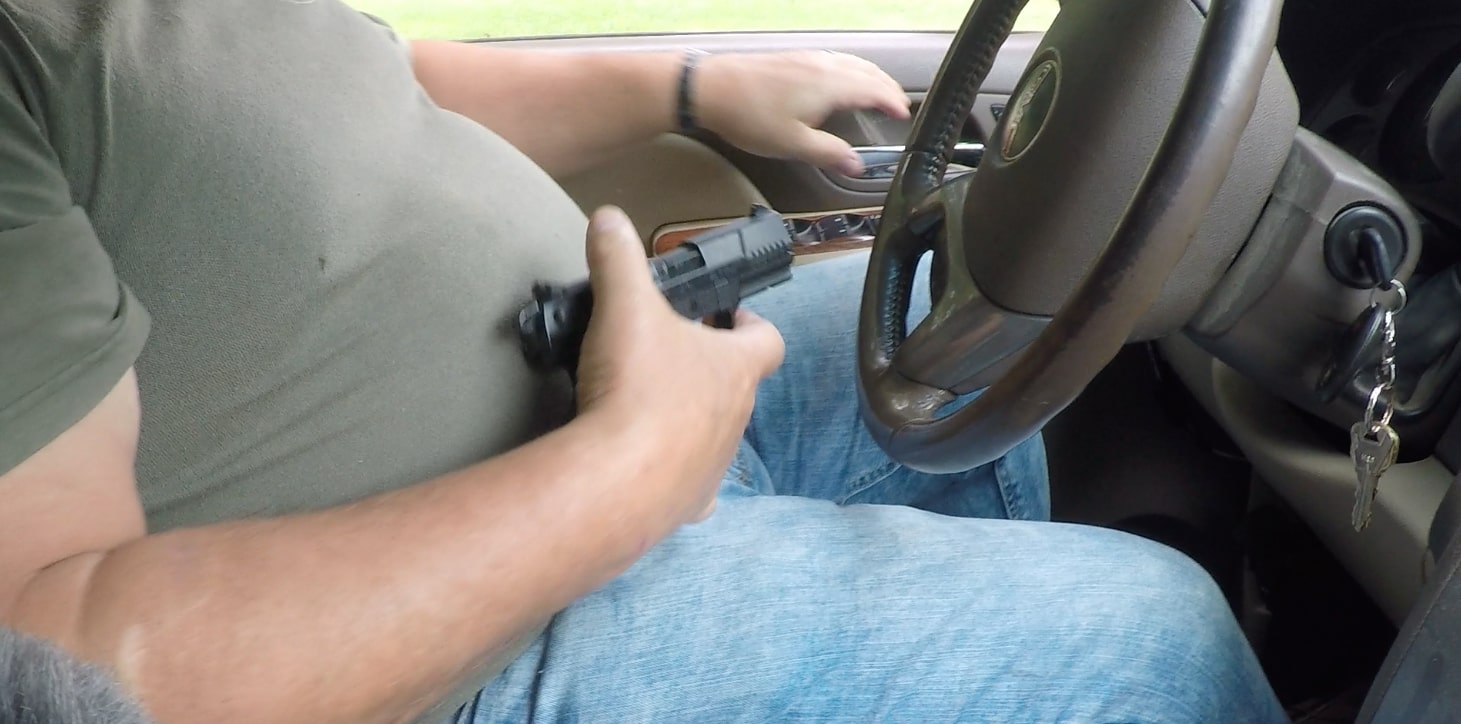
large
align-left
align-right
delete
“The largest nitrogen producing plant in the United States is located in Donaldsonville, Louisiana. Every day the plant consumes a million dollars worth of natural gas, boils 30,000 tons of water from a local river into steam, and produces 5,000 tons of ammonia (2 million tons a year). Every day these 5,000 tons of ammonia are loaded onto railcars, placed onto barges, floated down the Mississippi River, and sprinkled onto corn and wheat fields across the land. Not all of the nitrogen contained in ammonia ends up in crops. Only about a third of the nitrogen layered onto a cornfield, for instance, ends up in a kernel of corn. The rest washes into streams and leeches into groundwater.”Paul Offit, “Fertilizer Has Saved Billions of Lives, but It Also Has a Dark Side,” Popular Science April 3, 2017, https://www.popsci.com/fertilizer-nitrogen.
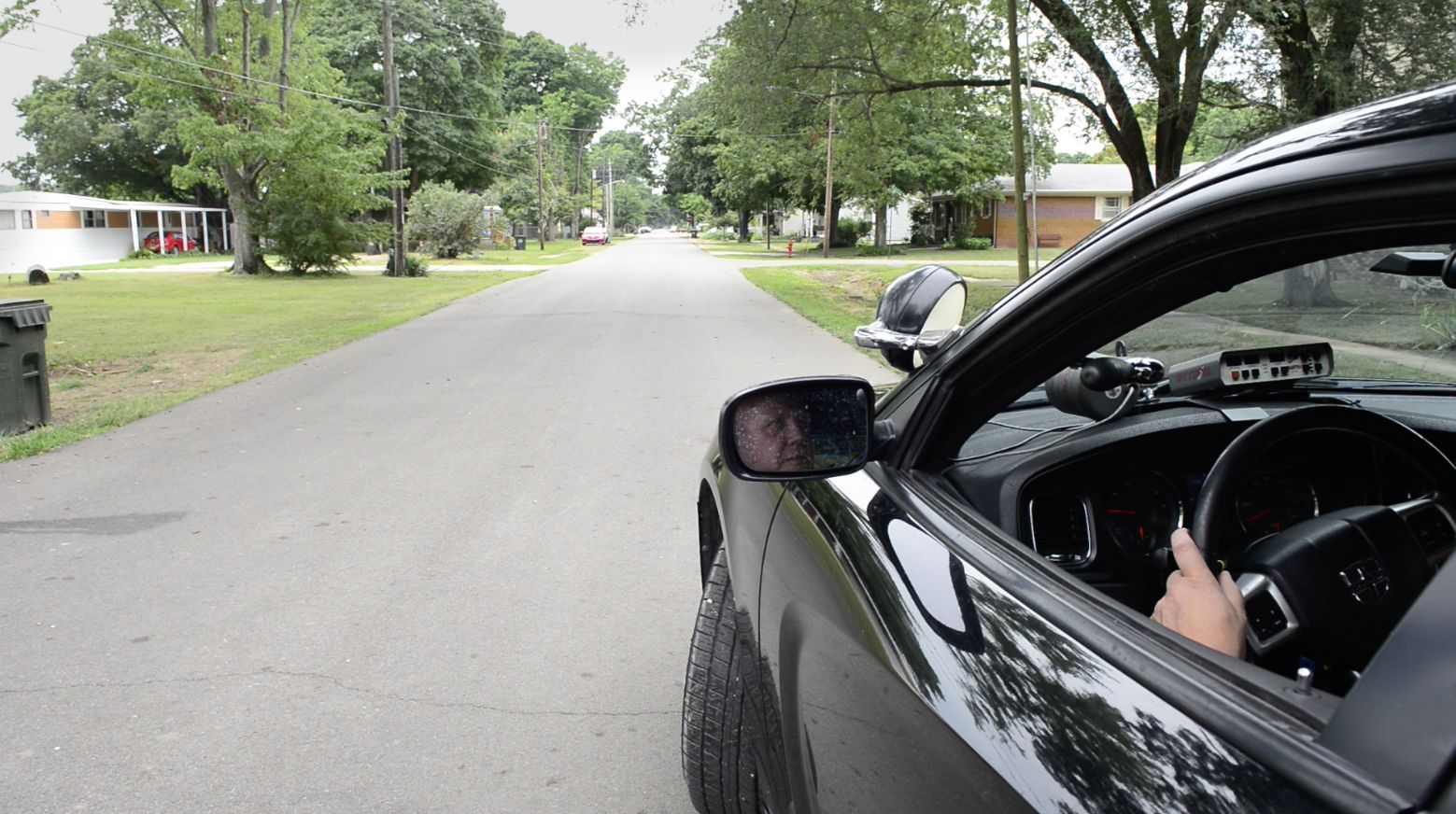
large
align-left
align-right
delete
Scene III: Cook Party
“As they are driving along an isolated stretch of I-10, the police officer notices white fumes ahead of them on the road. Anhydrous ammonia is released from a container into the fields, into the air, it expands rapidly, forming a large cloud that acts like a heavier-than-air gas. When the officer arrives on the scene, he finds a lifeless body on the ground. Attempting to rescue the person, the officer becomes overthrown by the fumes and collapses. The exhalation exposes and obscures the setting.”“Policeman Killed Instantly by an Ammonia Gas Tank,” YouTube video, 4:35, posted by 32bravo711, June 14, 2013, https://youtu.be/4D8FrKUYkK4.
Chemist: My understanding of addiction and my understanding of drug dependency is associated partly with the fact that in the presence of certain molecules, your cellular structure literally gets changed. I have no doubt that a scientist who’s really skilled and knows what they’re looking for can tell, "This neuron, this cell, or this bit of tissue and the cells in it, the materials in it—this is the place where a drug molecule would bind." They can say, "That sample’s from somebody who’s addicted, and that’s from somebody who’s not." Because these molecules will change our cellular structure. That’s not just happening only in addiction. Let’s be clear. We adapt, we are highly plastic. It’s not just plasticity in the brain. It’s plasticity at the cellular level. That’s well known. What happens though, I think, is that the substance of addiction has a particular ability.
Why are some substances stronger, more addictive? Why are nicotine and cocaine so much worse than THC in marijuana? It really has to do with the ability for that substance to agentially change the brain, the neurons, the body, the somatic reality of that human, so that a person who is addicted is no longer the same after the addiction than they were before. In a fundamental way, they are … I’m trying to avoid using the word “hybrid.” But they have been altered. The alteration is very specific to that molecule. It sure looks like the molecule is doing something to them.
The withdrawal is so bad, and getting off things. Because it’s not like you choose not to use it the second time. You’re no longer the person who used it once. You’re a person who’s used it for three months, and now you’re different. That molecule will make you pay a severe price if your nerves aren’t getting interactive with it. That’s a very molecular interaction. But again, it really has to do with the power of that molecule to change the environment in which it’s put. It’s not a virus. It’s not looking and saying, "I’m going to make…" Well, maybe. I could see a narrative where the nicotine molecule, by making people get addicted to it, gets people to grow more tobacco plants, and so there’s more nicotine in the world. Maybe there is a kind of viral analogy to this.
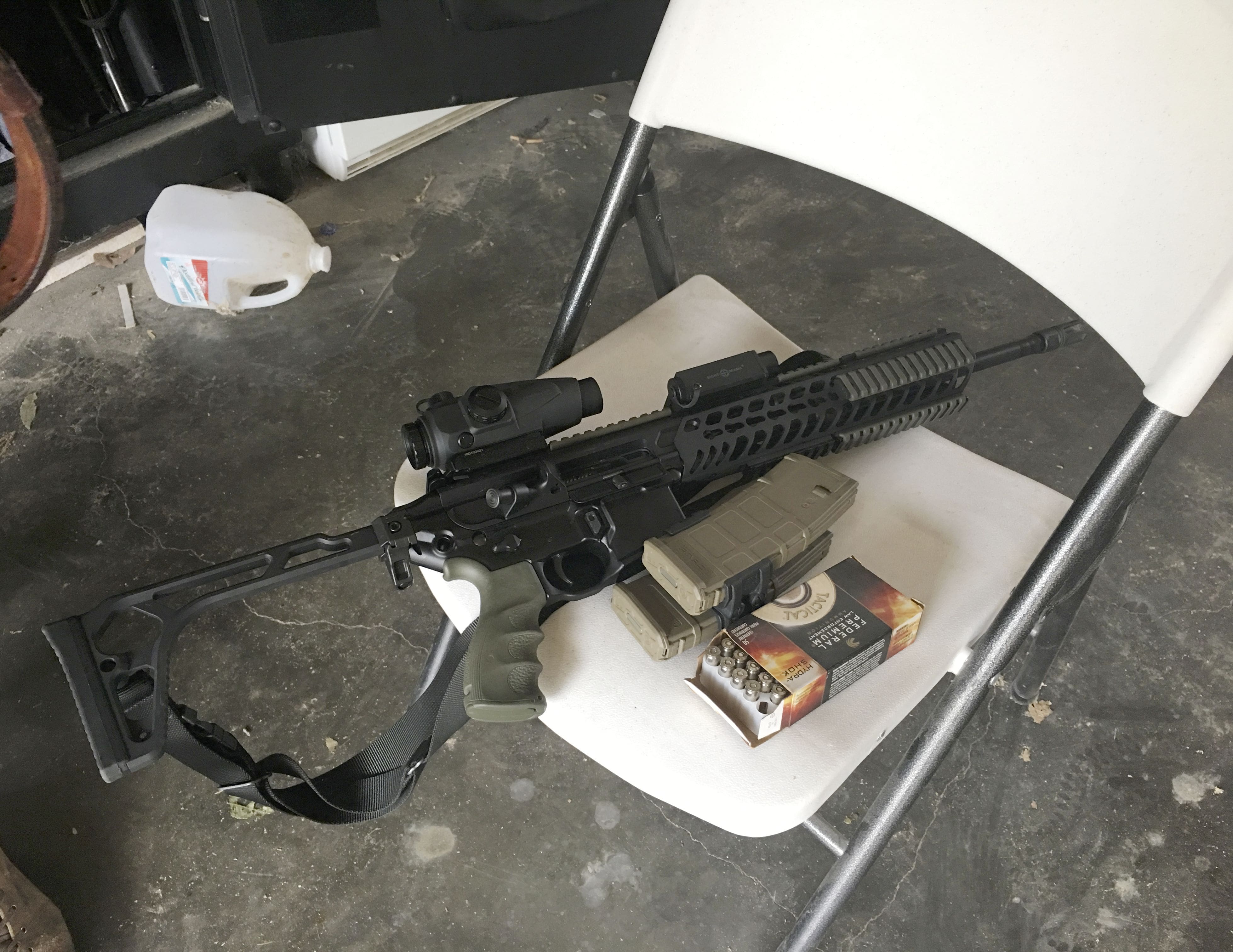
large
align-left
align-right
delete
Breacher: Here’s how’d they get around getting their raw materials. They’d have a cook party. You bring the camping fuel. If you get stopped for any reason, doesn’t matter—you just got camping fuel. I can’t arrest you. Is that an ingredient in manufacturing methamphetamine? Yes. Can I get you for manufacturing methamphetamine? Absolutely not.
OK, he brings the camping fuel. I bring a case of lithium batteries. The only guy that can get caught on the way to the cook that can get in trouble is the guy bringing the anhydrous ammonia. But no—because everybody brings a box of pills with them. You can buy two boxes, so everybody brings two boxes of pills with them, of pseudoephedrine. The only person that can get busted on the way to the cook is the guy with the anhydrous ammonia, and the only thing he can get busted for is having anhydrous ammonia in an unapproved container, which is an infraction. It’s the same as getting a speeding ticket.
They’d have this cook. Everybody’s got everybody’s phone number, right? I say, "Shit, I got caught on the way." You switch over and have Jim now bring the camping fuel. Now that you’ve got caught … You got caught for speeding and you got ten gallons of camping fuel. You’re not coming to my house. You can go on back home. We’ll split the dope up with you later because you’re a good guy, you were going to bring it. You can bring it next time.
They don’t get caught.
“The Gulf of Mexico, located next to the Louisiana ammonia plant: Every year about 1.5 million tons of nitrogen are dumped into the Gulf. This excess nitrogen has caused an overgrowth of algae that clouds the water and chokes off oxygen and sunlight to other species, like fish and mollusks. Algal overgrowth has killed streams, lakes, and coastal ecosystems across the northern hemisphere. And it’s not just the fish that are dying. The birds that eat the fish are dying, too. Synthetic nitrogen pollution isn’t limited to the waters; it’s also entered the air and come back to earth as acid rain, further damaging lakes, streams, and forests as well as the animals that depend on them. These problems will only worsen.”Offit, “Fertilizer Has Saved Billions of Lives.”

large
align-left
align-right
delete
Scene IV: DANIEL AND VALERIE
“Your body is warm, tingley everywhere. If you run your fingers thru your hair you can still feel your fingers couple seconds later. Excited, happy, bursting with energy and joy. Then, you find your genitals and the rest of your life is ruined because all you do is smoke meth and masturbate. I used to love meth till it literally turned into only masturbation or sex.
FUCK YOU METH!”“What Does Meth Feel Like?,” R/Drugs, Reddit.
Chemist: Most people take a multivitamin. Just as certainly as we take in food. We take multivitamins. But I take a statin every day. A drug for cholesterol. Right? I am poisoning my liver in order to survive longer. I am not just the person I was born as. I’m not just the genes. I’m not just the nurture that I had. I am every day taking a molecule that changes who I am.
Then there are others as well. I think there’s a profound importance associated with that. Yes, it’s important … I mean, this thing isn’t going to make me live longer. But everybody says, "That’s technology." Well, I would tell you that CrestorRosuvastatin, sold under the tradename Crestor among others, is a statin medication used to prevent cardiovascular disease in those at high risk and to treat abnormal lipids. is a pretty good technology too. I think there’s a lot of chemists who have that sense that what they’re doing is technology. It’s just not electronic technology. It’s molecular technology.
Breacher: I can take you to a person’s house right now, and walk up to the door and knock, wouldn’t think anything about it, say, "Hey, Daniel, what’s going on?" He and his wife will come outside instead of letting us in, and that’s what would happen, because I know they smoked methamphetamine this morning. No question in mind. They’ve got it at their house.
We went to a methamphetamine lab down in a township, and I happened to be second guy in line, I was the breacher. I was the one with the ram. It was actually only the second time I had done it. Our ram guy was out of commission. He was up at some training or something. When you hit a door, you want to blow it off the hinges seriously, so whoever the breach guy is, you want him to be a pretty big guy and be able to swing this big ole battering ram by himself. I’m worried to death. I’m more worried about, "Gosh dang it, I sure hope I can blow that door off the first hit," because I don’t want to have to hit it two or three times. So, the whole way down there in the truck, I’m sitting in the back of the truck and I’m really anxious about going in. Not about the dopers. I’m anxious about can I hit this door one time, because the guy who usually does it is Andy, our breach guy, and he’s 6’4”, 330 lbs, arms like that.
It would look like he was tapping it. Boom—and the whole thing would fall over. Anyway, we get out of the truck. We run up to the door, everybody gets in stack. We’re stacked up. We’re moved up, and how it works is if there’s eleven of us in a stack, we move in and when we get to a stopping point where we’re going to stop, everybody makes sure their guns are locked and loaded and ready to go, and then it starts with the guy in the back. I tap the guy in front of me on the back of the leg. When he’s ready, he taps the next guy. When the first guy, the door pinner, gets tapped, it’s on. We’re all moving. We all know we’re all going in unison to the door. We get there, we do that. Jeremy pins the door back and I mean I hit that door as hard as I could.
Well, Valerie, Daniel’s wife, was on a barstool leaned up against that door like this, and I seriously blew her all the way to the other side of the room with the door, and she was lying on the floor. As everybody moves in … I was the breacher, so I was the last guy in because you just get out of the way and let everybody pass you. She’s sitting over there on the floor and Doug has her sitting up on the wall, and she goes, "God dang, did Andy hit that door?" Doug said, "No, Donny was the breach guy tonight." She said, "Donny, god dammit, did you have to hit that door that hard?" I said, "What do you mean?" She said, "I was leaned up against that door on a barstool. I thought you had hit me with a truck." We’re just having a conversation like it was a big party. That’s just how it always went. She still got handcuffed, she went to jail, she went to see the judge.
She got her fine or whatever it was for being there, and so be it. Then I’ll see you again the next time. But that’s how we get acquainted. It becomes a relationship. It’s a game. I’m going to continue to play my end and you continue to try and catch me. If you do, good for you. We’ll have a discussion, talk about it, and then I’ll start over again tomorrow.
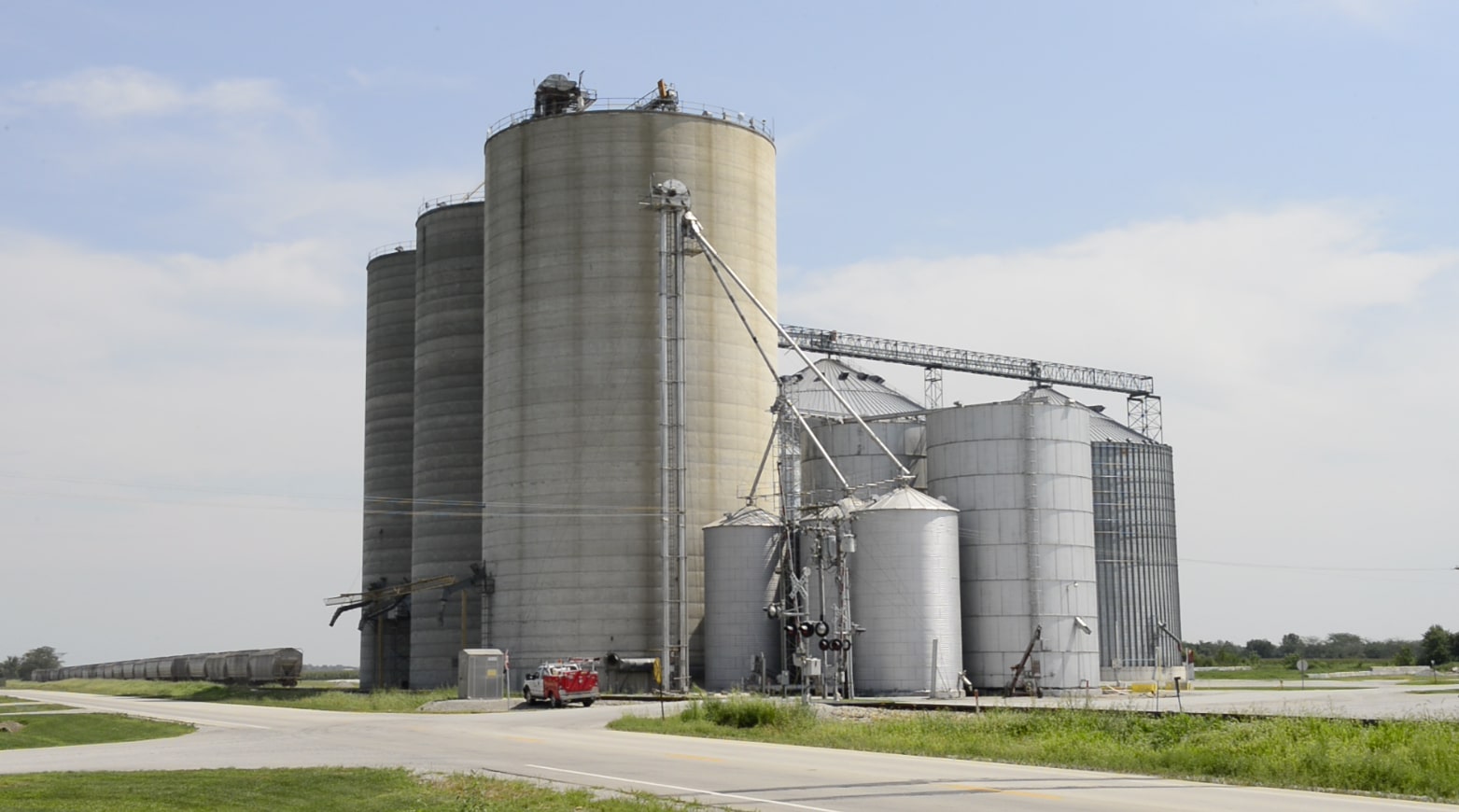
large
align-left
align-right
delete
postscriptum
“In the Deutsches Museum in Munich, separated from onlookers by a small barrier, stands the tabletop device built by Fritz Haber and Robert Le Rossignol to fix nitrogen from the air. Onlookers occasionally stop, stare for a few seconds, and walk past, thinking little of this machine that launched the worldwide manufacture of synthetic fertilizer, a process that has given so many people their lives and—due to ongoing contamination of the environment with excess nitrogen—a process that has probably started the clock on their eventual destruction.”Offit, “Fertilizer Has Saved Billions of Lives.”

small
align-left
align-right
delete
Tentative fragment and excerpt from Hopium Economy, Version 3.1, February 2019